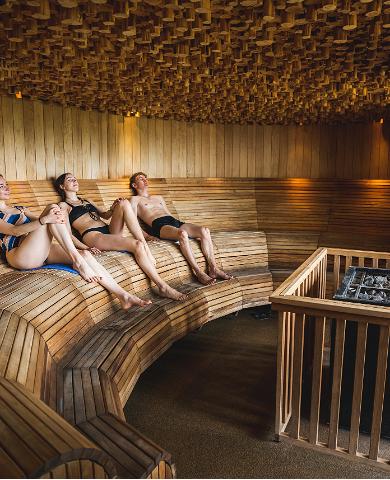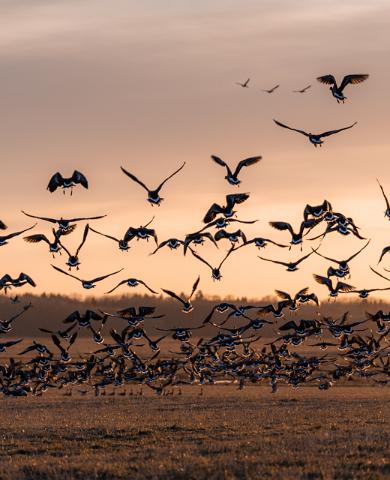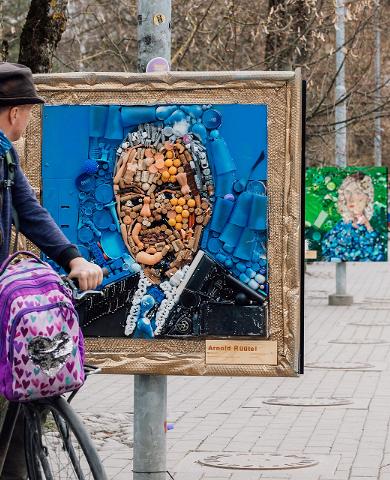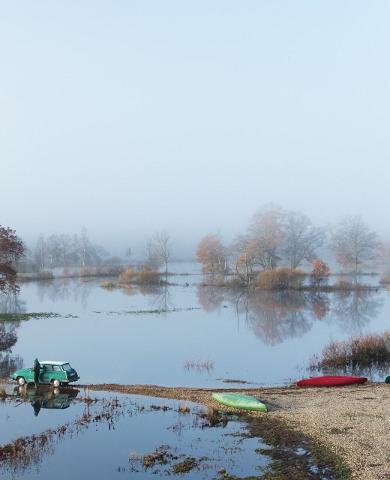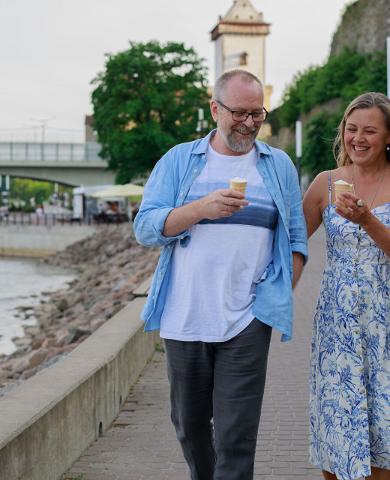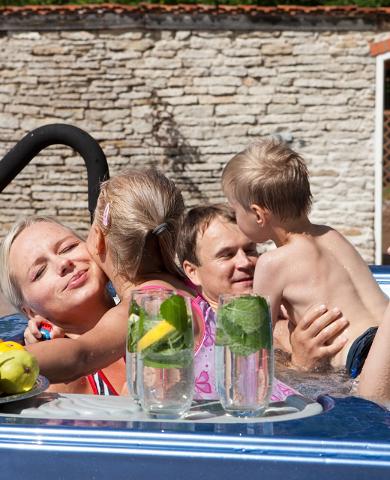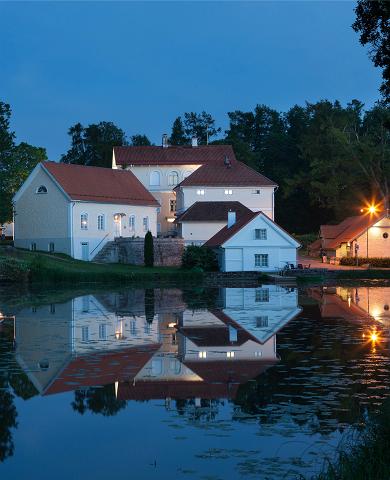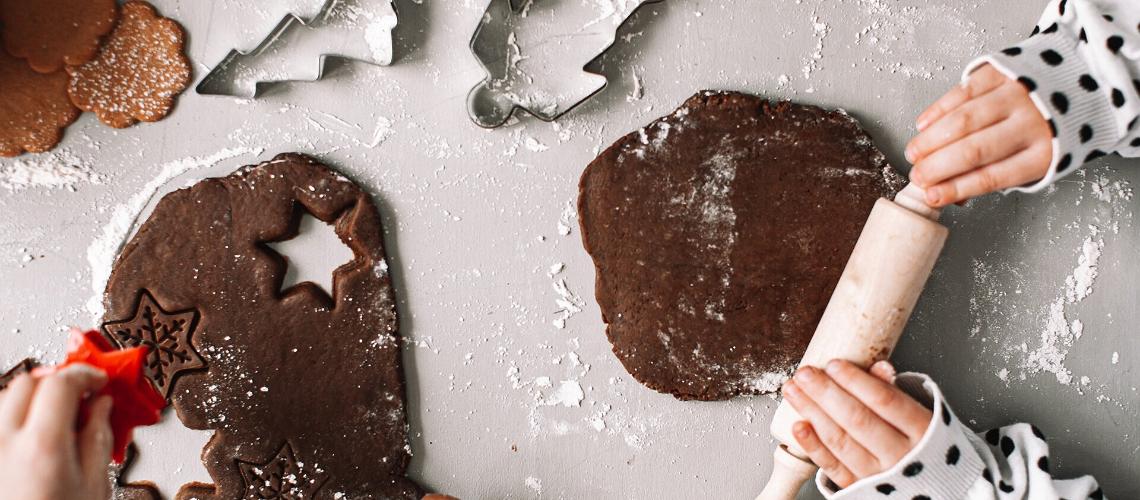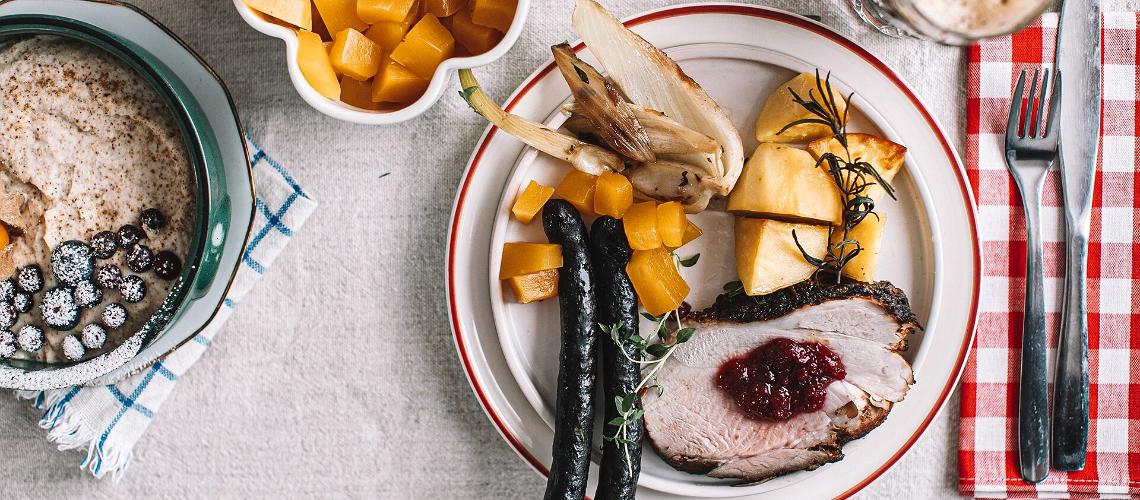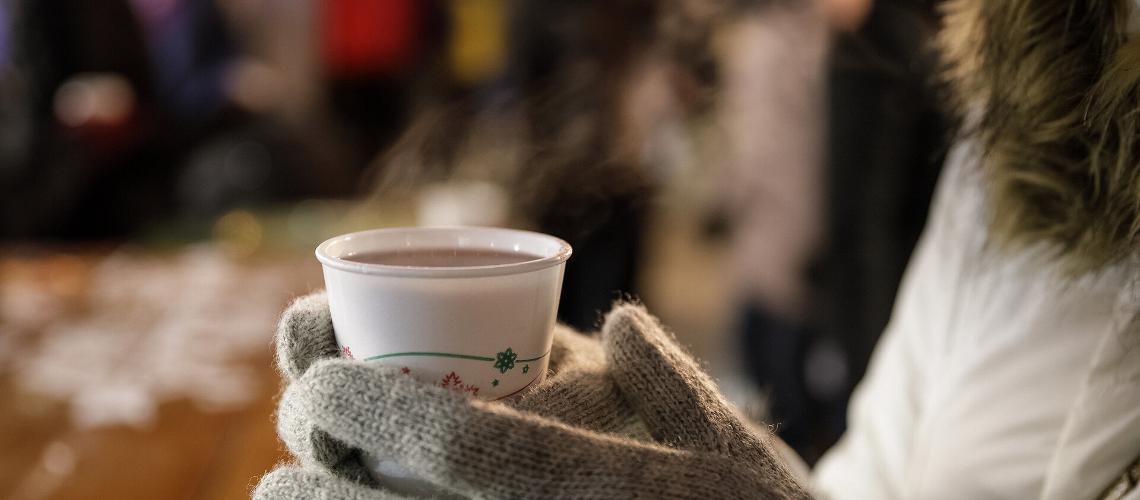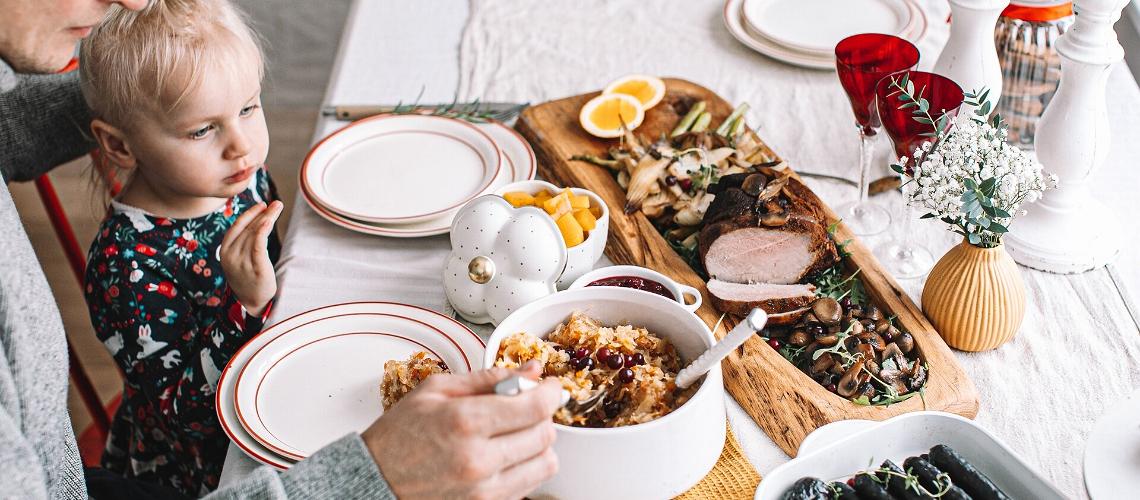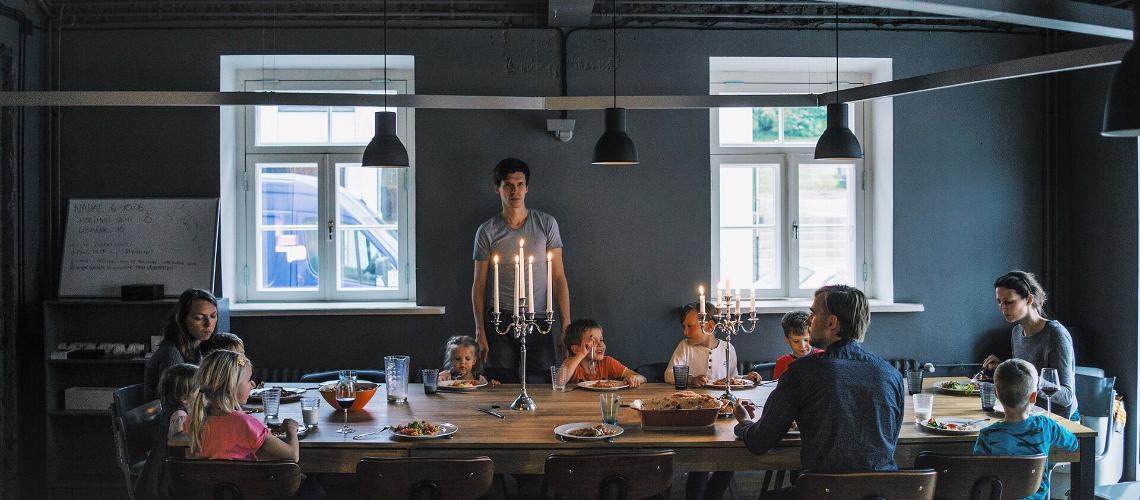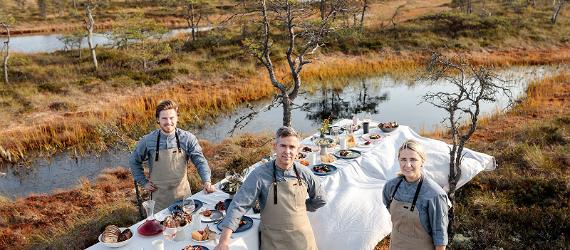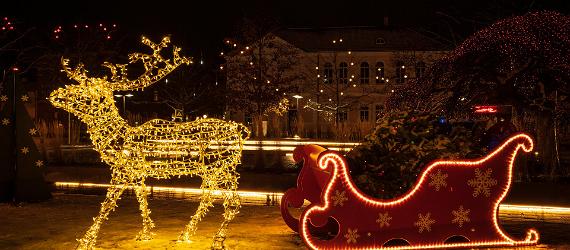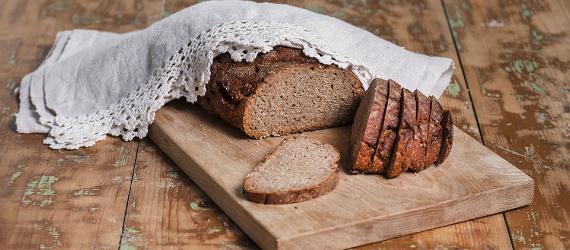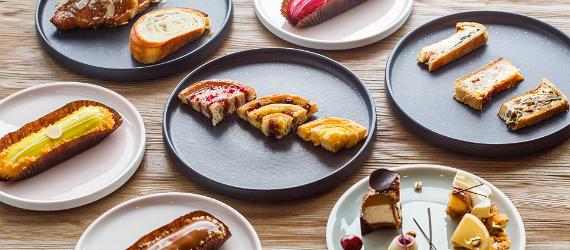If you find yourself in Estonia during the winter holidays, enjoying a local Christmas dinner is a must. Find out why the Christmas feast is such a meaningful event, which Estonian dishes to look for, and where you can have a feast of your own.
Winter sustenance
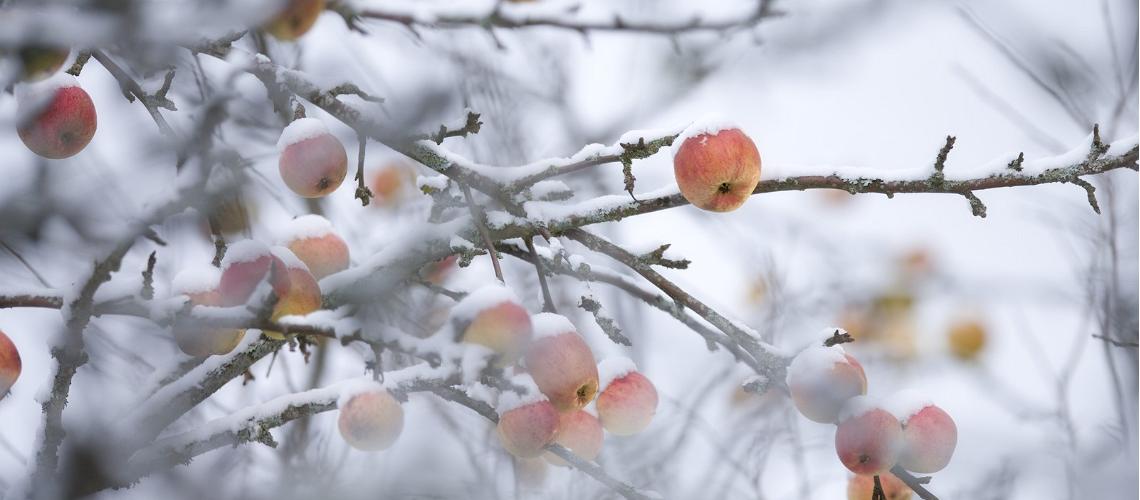
Winter delights
Apples grow abundantly in Estonia, but some types of talveõun (winter apple) are harvested late in the year and last through the winter.
Photo by: Jarek Jõepera
The Estonian way of life revolves around the changing seasons and nature's bounty. Berries are picked and collected in the summer months, while fruits, vegetables, grains, potatoes, and mushrooms are harvested in the autumn. This produce, along with farmed and wild game meats, is pickled, salted, smoked, and otherwise preserved to keep pantries full throughout the winter. Of course, nowadays, there are grocery stores on every corner, so home food preservation is done more for fun than out of necessity. However, the practice of growing and harvesting one's own food remains popular in Estonia and is making its way back into modern-day kitchens. You can even see innovative young chefs using these time-honored culinary techniques as a way to make the most of seasonal ingredients.
Typical Christmas foods in Estonia
Winter dishes in Estonia tend to be hearty and filling in order to provide energy and warmth in the cold weather. The food served at a Christmas dinner is no exception. Staples include verivorst (blood sausage), sült (jellied head cheese), hapukapsas (sauerkraut), oven-roasted potatoes, and pork. Lingonberry sauce and pickled pumpkin are offered on the side, as the acidity is the perfect accompaniment to the richness of the meat. While these food traditions go way back, Estonian families today sometimes opt for lighter fare over the holidays, especially as vegetarian and vegan options become more popular.
Apples and mandarin oranges are also enjoyed as Christmas treats, though piparkook (gingerbread) is the preferred seasonal dessert. While nothing beats homemade gingerbread, it's easy to find pre-made dough and icing at all major supermarkets, and the stands in the Christmas market, local bakeries, and cafes all have beautifully decorated gingerbread cookies for sale. There's even a seasonal exhibition devoted to gingerbread sculptures called Gingerbread Mania! A crisp cookie and a mug of mulled wine — either entirely alcohol-free or with an extra shot of Vana Tallinn — is a sweet treat that will keep you warm all winter.
Ancient Christmas dinner traditions
The Christmas meal itself, eaten on Christmas Eve or the night of Christmas, is an important family event that goes back to pagan times. There were to be seven, nine or twelve servings of food to bring good luck and plenty for next year's harvest. Food had to remain on the table all night long, and it was forbidden to peek under the table, for this was a sacred place where spirits dwelled, and any food dropped was left there.
Recipes for a DIY Estonian Christmas
If you're up to making your own Estonian Christmas dishes, we've got a few recipes you can try out for yourself so you can cook the Estonian way.
Recipe for oven-baked pork with sauerkraut
Ingredients
- 1 kg pork (leg or loin with fat or belly or rind)
- 500 g sauerkraut (shredded cabbage) with carrot
- salt, pepper, mustard, garlic
Directions
- Cut the cut of pork with grid-shaped incisions.
- Rub the meat with salt, pepper, and mustard. Let this sit for 1 hour at room temperature.
- Preheat the oven to the maximum temperature
- Place cabbage and some garlic cloves in the bottom of a roasting pan (preferably cast iron). Add sprigs of rosemary and/or thyme if you want. Add water enough to cover the cabbage.
- Place the pork on top of the cabbage with the rind facing up.
- Cover with the lid and place in the oven.
- Lower the heat to 175 C.
- Bake the pork for 1 hour.
Recipe for verivorst (blood sausage)
Ingredients
- 675 g pork
- 1.25 kg barley groats, washed
- 200 g onions, chopped
- Salt and pepper to taste
- Marjoram, oregano, caraway to taste
- 1/2 L pork blood
- 12-15 sausage casings
Directions
- Boil the barley in salted water for about 45 minutes.
- Drain and place into a large bowl.
- Add the marjoram and salt to the barley, mix well, and set aside.
- Cut the salt and fresh pork into knuckle-sized chunks.
- Put the pork into a heated saucepan with a little water and start heating it.
- Increase the heat to brown the pork.
- When the pork begins sizzling, add the chopped onions and cook for 30 minutes until brown.
- Add the cooked pork and onion to the barley.
- Stir well and season to taste.
- Allow the mixture to cool.
- Pour the blood into the mixture, stir gently to avoid foaming.
- Prepare the sausage casings by rinsing them twice and soaking them in water.
- Fit a funnel into one end of the casing and begin stuffing the sausage mixture into it.
- Do not overstuff the casings. It's best to fill it in just less than three-quarters full and ensure there is some space on both ends.
- Tie both ends of the casing together with twine.
- Poach the sausages in hot water for about 15 minutes.
- If any sausage floats, prick any air pockets with a knife and let it continue to poach.
- Lay the poached sausages on a tray to dry.
- Place them in a greased baking tray and bake for about 1 hour at 350 F until the sausages become crispy and cooked through.
Where to go out for Christmas dinner
If you're visiting Estonia over Christmas, you may not have the equipment — or the motivation! — the spend the day cooking a feast. You can still enjoy a traditional Estonian Christmas dinner and a memorable holiday dining experience at one of the many hotels and restaurants offering special Christmas meals on December 24th or 25th. Even throughout December, many restaurants prepare special holiday menus of festive dishes to celebrate the season. Hotels and manor homes may also offer special seasonal packages, including a Christmas meal and accommodation, to make your holiday away from home truly unforgettable.



